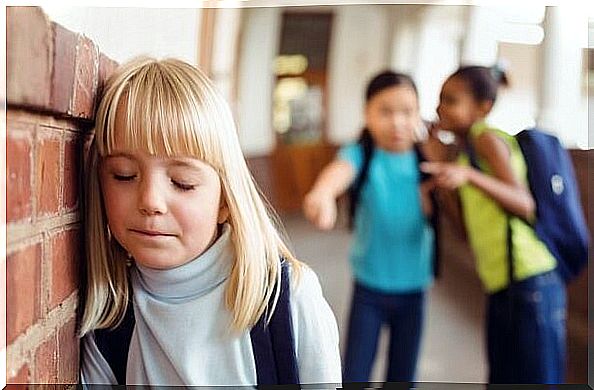Bullying Is A Public Health Problem

Humiliation, teasing, threats, cyber bullying, pushing, spreading rumors, making them invisible… Bullying that occurs in classrooms has many forms, many reliefs and edges, but all of them can be translated into the same words: violence and suffering. Perhaps, for this reason, we should start to think that bullying is actually a public health problem.
There are those who continue to see this issue as “ what happens in school classrooms” or worse, “ something else that, after all, is a child’s thing” . However, the data is there: more than 50% of primary and secondary school students have suffered bullying at some time. 10% suffer from it continuously and at some point commit a suicide attempt.
Also, something that is present in the lives of these minors are anxiety disorders and depression. Some effects that also drag into adult life, completely reducing the psychosocial development of the person. Therefore, to deal with this long-standing problem in our society, it takes more than good intentions.
It is a priority that we begin to see this reality as a public health problem, because whoever lives this experience in their own skin suffers physically and psychologically and the consequences are lasting.

Why is bullying a public health problem?
Every May 2, the world day against bullying is celebrated, a more than ideal time to reflect on a situation that, far from being mitigated, intensifies its complexity. We say the latter for phenomena such as cyberbullying, a form of aggression in which another door is opened in which bullies trace a type of abuse that is more sibylline, scathing and with an almost devastating impact for the primary or secondary school child.
The bullying is a public health problem and whether public bodies being seen so would advance such time addressing this issue. Because this form of violence needs something more than the active commitment of all the agents of our schools and institutes and of the families themselves.
The bullying is like a disease that can be fatal
There are 4-year-olds who go to mental health to be treated for the effects of bullying . Kindergarten bullies exist and can completely alter the health of whoever they choose to be their victim. At these ages sleep problems, eating problems, psychosomatic illnesses, reappearance of enuresis can appear … The effects are usually tremendous.
Likewise, those children and adolescents who are constantly bullied tend to feel the consequences until adulthood. In many cases, they experience post-traumatic stress disorder, a persistent decline in self-esteem, and an increased vulnerability to stress and anxiety.
On the other hand, there is a factor that is often seen in the following situation. There are children and adolescents who silence what happens to them, who never ask for help. There are those who reach maturity trying to erase those experiences from their minds. And even so, the wounds are there, those that are not seen, because bullying is not always about hitting and shoving, but about humiliation.
All that trace of unresolved pain remains latent, altering the personality, performance, the opportunity to be happy. It is a “disease” that is not cured by time.

The bullying as a public health problem
Often, neither parents nor teachers know the situation of that adolescent who, at a given moment, makes his first suicide attempt. The bullied person chooses this option not out of cowardice, but out of the desire to stop suffering, to have to experience anxiety every time they leave home to go to class.
If they do not explain their problem at home, it is because of embarrassment or simply because they do not worry the parents. If they do not say anything to the tutors or teachers, it is because of a lack of confidence or worse, because they assume that nothing will change or that things may get even worse. And yet, as Save the Children reveals , the numbers are there, harassment and cyberbullying continue to increase every year.
It is time to understand that bullying is a public health problem. We are facing a form of violence such as that exercised for reasons of gender, race, religion, etc. To address it, you have to understand the origin: sociocultural, family, school, personal … Later, develop an intervention that should reach all possible areas.
Society must be aware that harassment is violence and that we cannot normalize it, or leave space for it. The school and the family are those two central axes that are so complex to handle and “educate.”
Parents should be models of respect, empathy and positive sociability. Parental education and training would certainly be a good strategy.
Last but not least, we need a close and sensitive social health intervention towards the victims to avoid the impact of the consequences of bullying. You also need to focus on the bully. Understanding the reason for his behavior and re-educating him would always be a good strategy.
Let us reflect on this often silenced reality of our society and erase this harmful form of violence forever.









